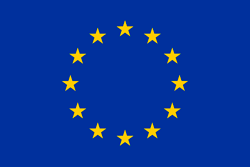“With the LIAISON project, TECNALIA helps to transform the EU’s transport infrastructure into a more sustainable and low-carbon economic activity”
Transport infrastructure has a very high environmental impact due to its material use, waste production and CO2 emissions
As the coordinator of the LIAISON initiative, David García Sánchez (TECNALIA) points out, “For climate, energy and sustainability reasons, Europe must work towards a 100% renewable transport system by 2050 and 50% by 2023”.
The aim of the initiative is to develop solutions that cover the entire life-cycle of transport infrastructure; including construction, maintenance, operation and decommissioning in a digital environment for future transport infrastructure.
A series of innovations will be developed
The innovations developed will be demonstrated in different cases on both roads and railways located in Spain, Poland, Slovenia and Italy.
- Sustainable smart beams, rigid paving and improved ballast
- Bioasphalt
- Intelligent paving inspection system
- Intelligent tunnel control system
- Photovoltaic railings
Generation of material resources and renewable energy
The project considers the enormous potential of the infrastructure itself for the generation of resources, such as the reuse and recycling of waste produced in infrastructure interventions. Similarly, there is great untapped potential for the deployment of renewable energy generation systems together with energy recovery and energy-saving solutions.
Finally, to ensure the implementation of paradigm-shifting technical solutions in the sector, a governance framework will be developed to activate, articulate and monitor compliance with circular economy principles throughout the life of the infrastructure.
LIAISON Consortium
The LIAISON consortium includes key players from the transport infrastructure value chain, and members of leading national, EU and international platforms, associations and expert groups. The Spanish Ministry of Transport, Mobility and Urban Agenda (MITMA) is also involved, as well as other entities.

This project has received funding from the Horizon EU research and innovation program, in accordance with Subsidy Agreement No. 101103698.